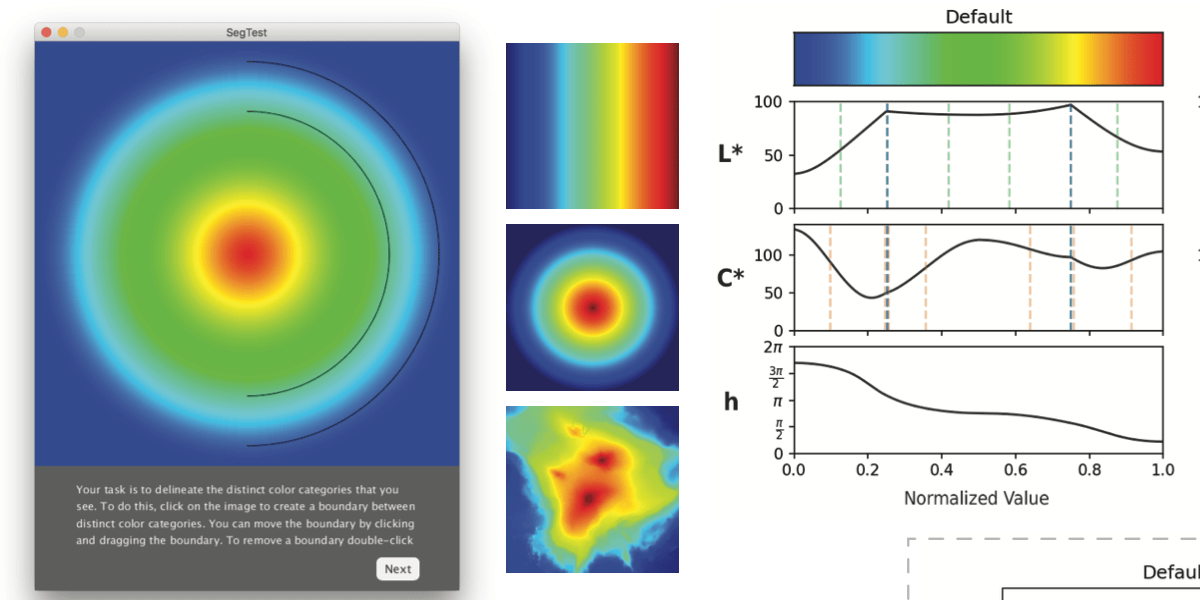Abstract
The visualization literature tells us that rainbow color maps are bad, yet domain experts continue to use them. Why? The truth is, we don’t know. It turns out that there is a lot we don’t know about rainbow color maps. Two of the primary reasons our community argues that rainbow color maps are ineffective can be traced back to the idea that rainbow color maps implicitly discretize the encoded data into hue-based bands; yet there is no research addressing what this discretization looks like or how consistent it is across individ- uals. This poster discusses an exploratory study designed to test how individuals’ perceptual systems discretize widely used spectral schemes and whether this discretization can be modeled by variations in lightness and chroma. We present high-level discussions of the experimental design, our analysis, and the implications of our results.
Citation
P. Samuel Quinan,
Lace Padilla,
Sarah H. Creem-Regehr,
Miriah Meyer
Hue Bands and Human Perception: Revisiting the Rainbow
Proceedings of the IEEE Information Visualization Conference - Posters (InfoVis), 2017.
BibTeX
@inproceedings{2017_infovis_huebands,
title = {Hue Bands and Human Perception: Revisiting the Rainbow},
author = {P. Samuel Quinan and Lace Padilla and Sarah H. Creem-Regehr and Miriah Meyer},
booktitle = {Proceedings of the IEEE Information Visualization Conference - Posters (InfoVis)},
year = {2017}
}
